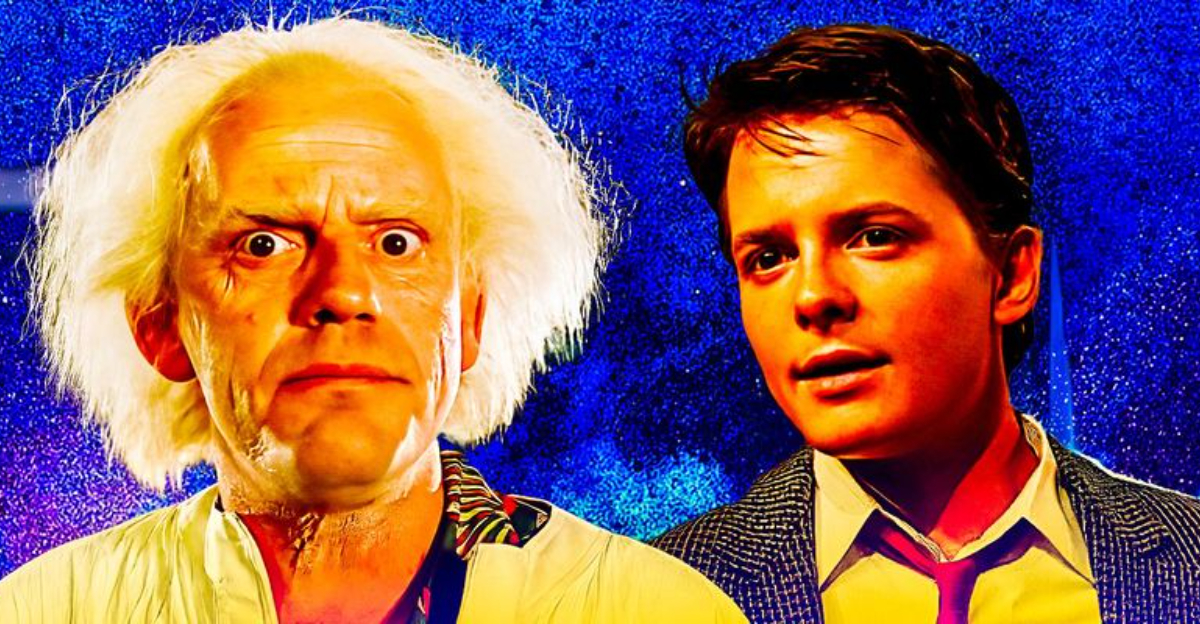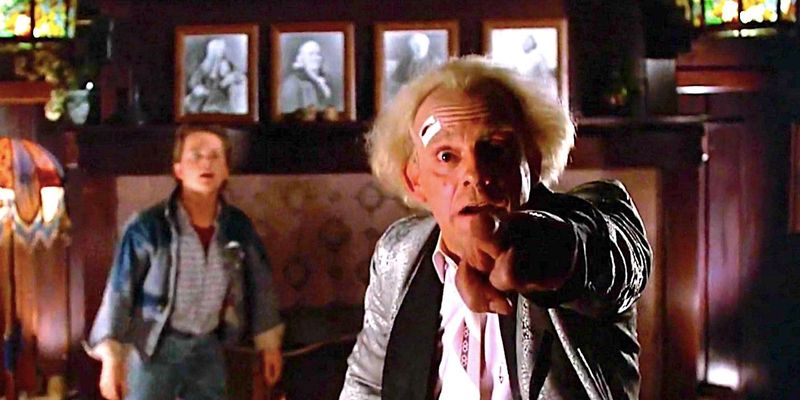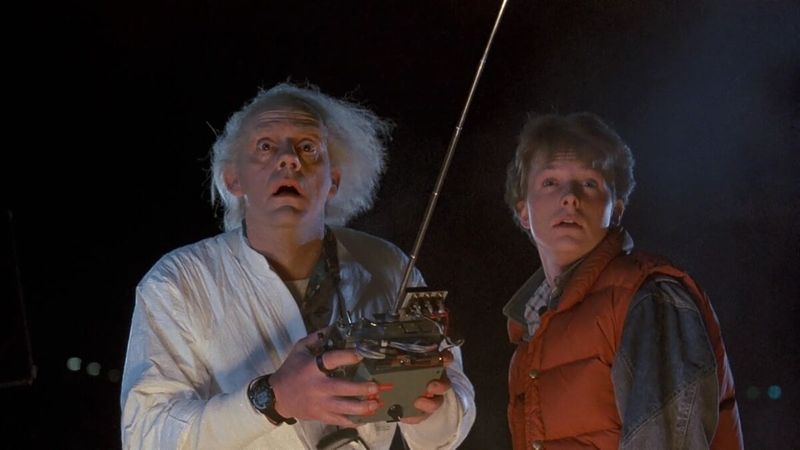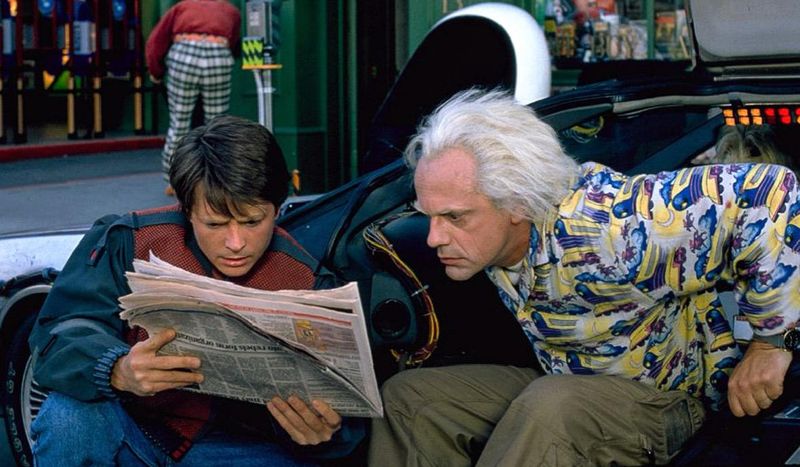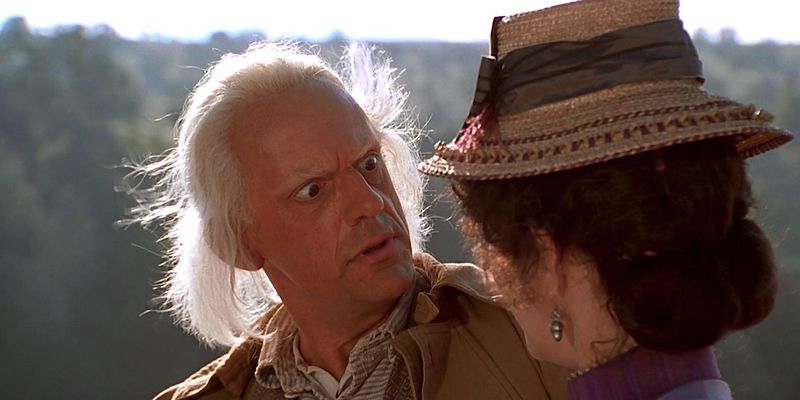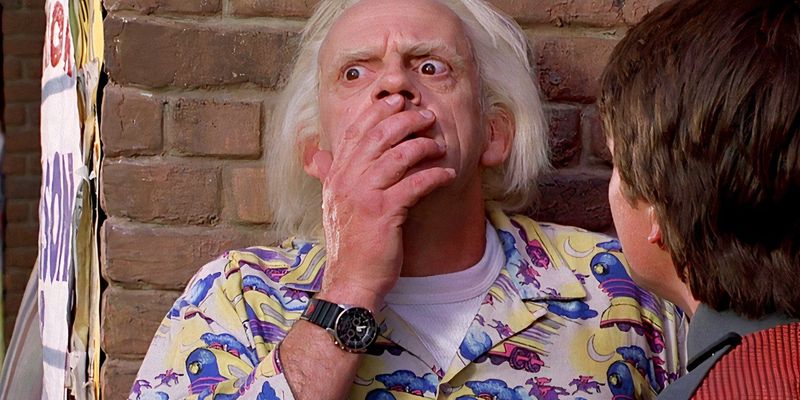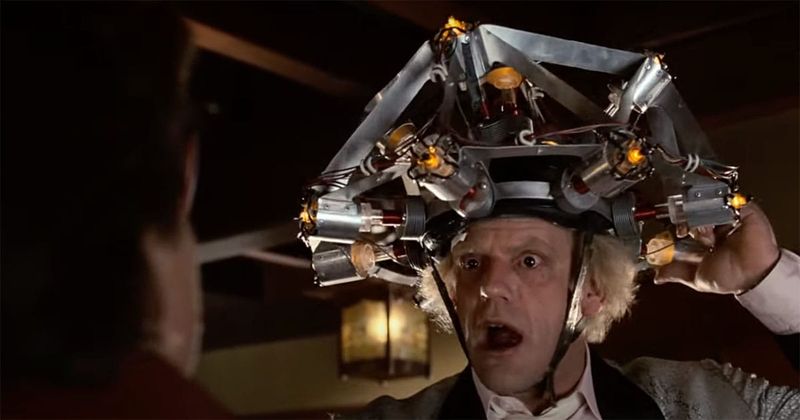Dr. Emmett Brown, the wild-haired inventor of the time-traveling DeLorean, is often remembered as the eccentric genius who helped Marty McFly save his family—and the space-time continuum. But a closer look reveals something unsettling: Doc Brown may not have been the hero we thought he was. From questionable ethics to outright recklessness, here are ten clues that suggest Doc Brown was never the savior of Hill Valley… he might’ve been the problem.
1. He Built a Time Machine… Out of Stolen Plutonium
Doc Brown’s famous DeLorean time machine runs on plutonium—a highly radioactive substance he stole from Libyan terrorists. Not only did he lie to them about building a bomb, but he also endangered everyone around him by casually handling nuclear material in a suburban garage. This reckless ambition shows a man willing to risk almost anything for his experiments. What’s more, his deceitful dealings with dangerous figures put Marty and others in grave danger. The choice to use stolen plutonium raises questions about his morality and judgment.
2. He Brought a Teenager Into a Life-Threatening Situation
Why does a middle-aged scientist hang out with a high school kid, let alone drag him into a plutonium-fueled time-travel experiment? Marty almost gets killed during the first test run. It’s one of many moments where Doc shows a dangerous disregard for Marty’s safety. Engaging a teenager in such perilous activity speaks volumes about Doc’s ethical boundaries. His casual involvement of Marty in life-threatening situations reveals a reckless side that prioritizes scientific curiosity over human welfare.
3. He Clearly Didn’t Think Through the Timeline Consequences
Time travel is a delicate science—but Doc plays fast and loose with history. He warns Marty not to interfere, then helps him deliberately interfere by trying to fix his parents’ relationship. He only panics about the butterfly effect after things go sideways. This inconsistency demonstrates a lack of foresight and responsibility. Doc’s cavalier attitude towards altering the past reveals a dangerous hubris. His willingness to manipulate time without considering the broader implications shows questionable judgment.
4. He Let Biff Tannen Roam Free
Doc had the perfect opportunity to remove Biff’s sports almanac in Part II, yet he fails to destroy it right away. Worse, he allows Old Biff to return to 2015 after delivering the book to his younger self. That decision causes an alternate dystopian timeline where Biff rules like a tyrant. Doc’s inability to prevent this disaster illustrates a significant lapse in judgment. His failure to contain Biff’s ambitions demonstrates a lack of control and foresight in managing time-travel ramifications.
5. He Constantly Ignores His Own Warnings
Despite warning Marty not to disrupt time, Doc is the first to break his own rules. He reads the future newspaper about himself in Part II and even manipulates events to prevent his own death—while pretending to be a martyr. These actions show a blatant disregard for his own guidelines. Doc’s selective adherence to time-travel rules reveals a hypocrisy that undermines his credibility. His willingness to bend rules for personal benefit challenges the notion of him as a principled inventor.
6. He Fell in Love with a Woman Who Was Supposed to Die
In Part III, Doc disrupts time even further by saving Clara Clayton, a schoolteacher who was originally supposed to fall into a ravine. His decision, based purely on emotion, alters the course of Hill Valley history—and nearly gets them both stranded in the Old West. This emotional entanglement showcases Doc’s vulnerability to personal desires over logical decision-making. His choice to save Clara endangers the timeline and reveals a softer, yet problematic, side to his character.
7. He Created a Future He Never Planned to Monitor
After helping Marty set everything “right,” Doc just… vanishes. He flies off with Clara and their time-traveling steam train, leaving a newly rewritten timeline behind. No oversight. No accountability. Just trust that everything’s fine now. Doc’s sudden departure illustrates his lack of responsibility towards the future he helped shape. His abandonment of the timeline raises questions about his dedication to solving the problems he created. It leaves an unsettling feeling of unfinished business.
8. He Used Time Travel for Selfish Reasons
Doc claims to be preserving the fabric of time, but many of his choices serve his own needs—like saving his own life, falling in love, and inventing wild gadgets in the past. He’s not above bending reality if it suits his personal happiness. This self-serving nature paints a picture of a man more interested in personal gain than noble causes. Doc’s manipulation of time for selfish ends challenges his portrayals as a heroic figure.
9. His Inventions Are Incredibly Dangerous
From the DeLorean to the flying train, Doc’s inventions cause chaos more often than they help. They’re unstable, unpredictable, and often break the laws of physics. The man is more mad scientist than noble innovator. His creations, while brilliant, pose significant risks to those around him. Doc’s penchant for dangerous experimentation highlights a reckless disregard for safety. It raises the question: is innovation worth the chaos it brings? His cavalier approach to invention creates an aura of danger.
10. He Leaves Marty With a Lifetime of Questions
At the end of the trilogy, Marty is left on a trackless timeline, with no real understanding of what’s changed and what hasn’t. Meanwhile, Doc rides off into time with a new family—leaving Marty with the existential burden of knowing how fragile reality truly is. This abandonment encapsulates Doc’s inconsistent approach. His departure without providing clarity or closure to Marty underscores a lack of accountability. Marty’s bewilderment reflects the ambiguity and uncertainty left in Doc’s wake.
